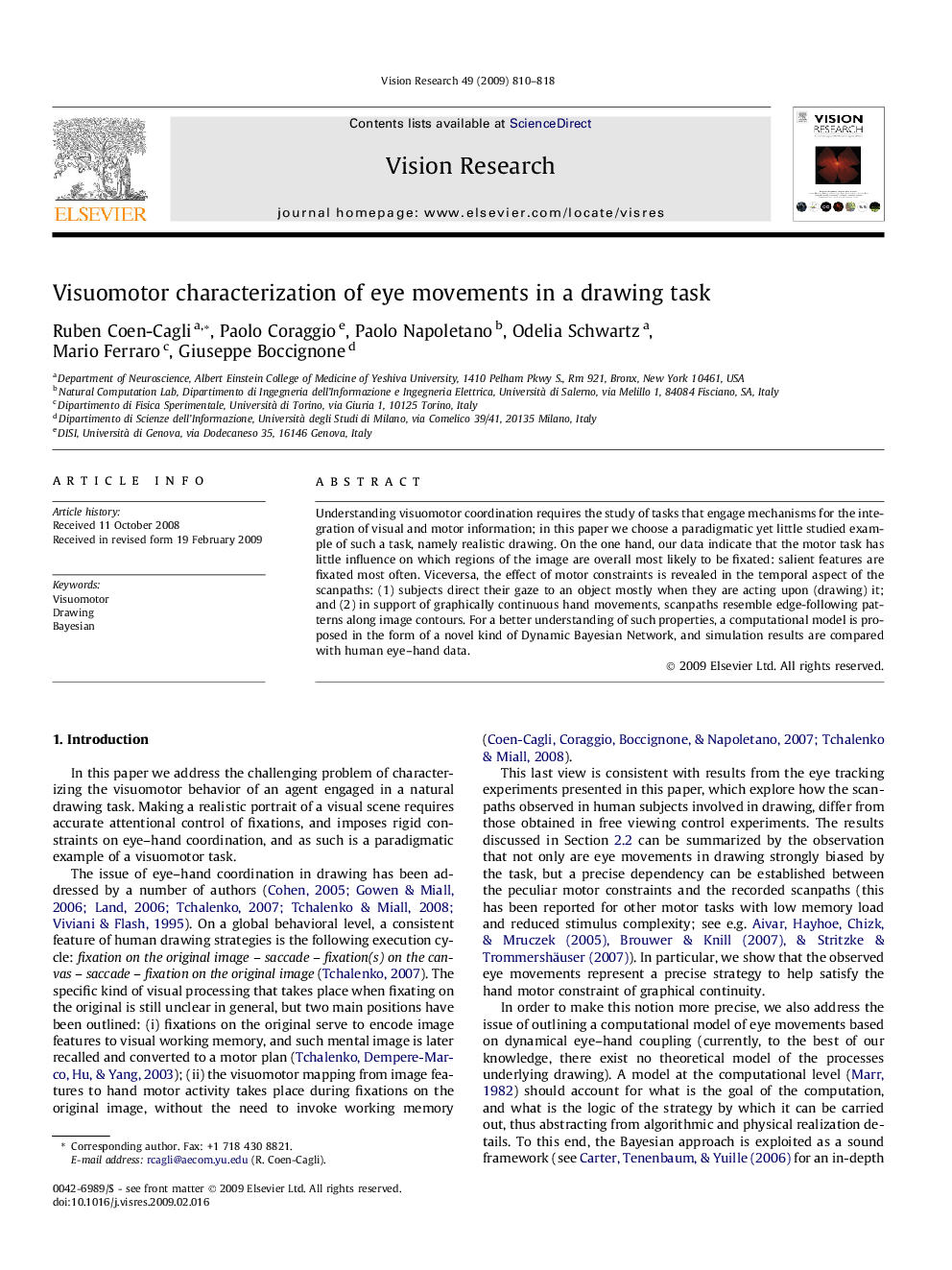| کد مقاله | کد نشریه | سال انتشار | مقاله انگلیسی | نسخه تمام متن |
|---|---|---|---|---|
| 4034792 | 1263483 | 2009 | 9 صفحه PDF | دانلود رایگان |

Understanding visuomotor coordination requires the study of tasks that engage mechanisms for the integration of visual and motor information; in this paper we choose a paradigmatic yet little studied example of such a task, namely realistic drawing. On the one hand, our data indicate that the motor task has little influence on which regions of the image are overall most likely to be fixated: salient features are fixated most often. Viceversa, the effect of motor constraints is revealed in the temporal aspect of the scanpaths: (1) subjects direct their gaze to an object mostly when they are acting upon (drawing) it; and (2) in support of graphically continuous hand movements, scanpaths resemble edge-following patterns along image contours. For a better understanding of such properties, a computational model is proposed in the form of a novel kind of Dynamic Bayesian Network, and simulation results are compared with human eye–hand data.
Journal: Vision Research - Volume 49, Issue 8, 4 May 2009, Pages 810–818